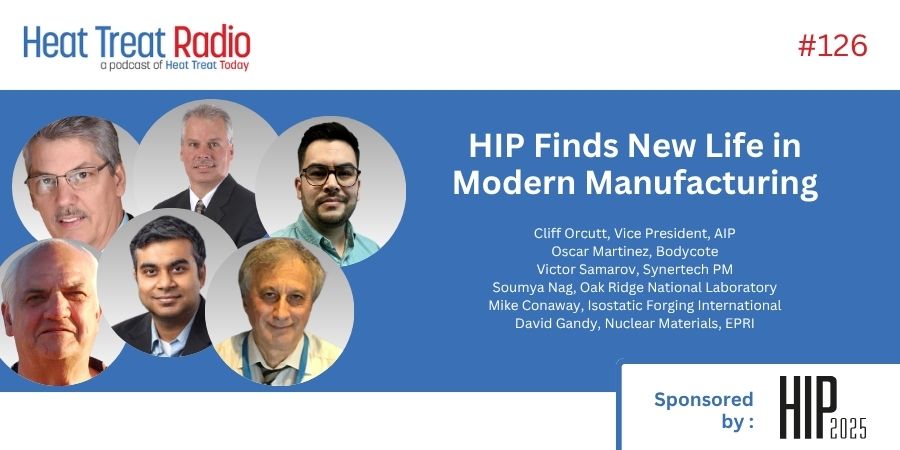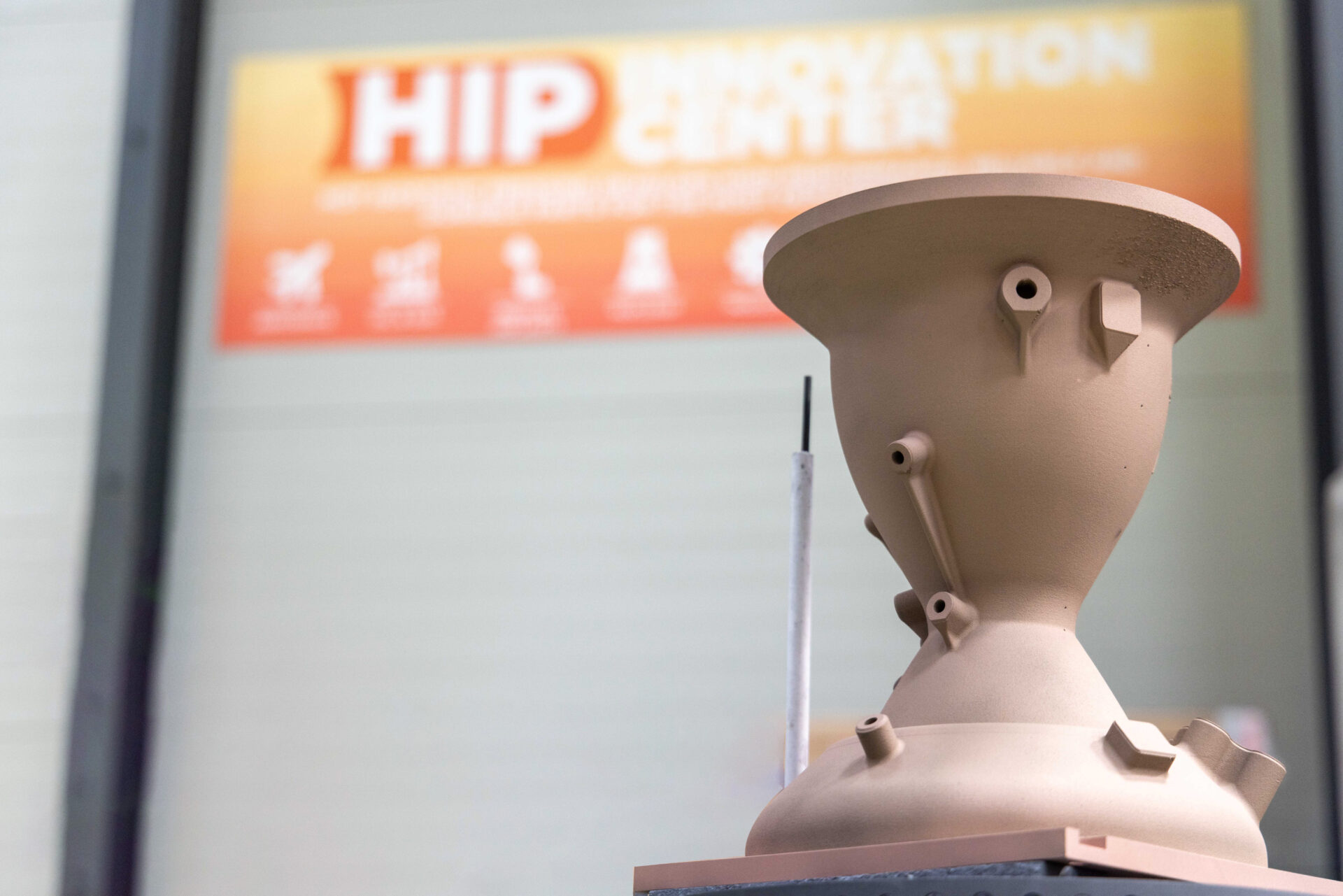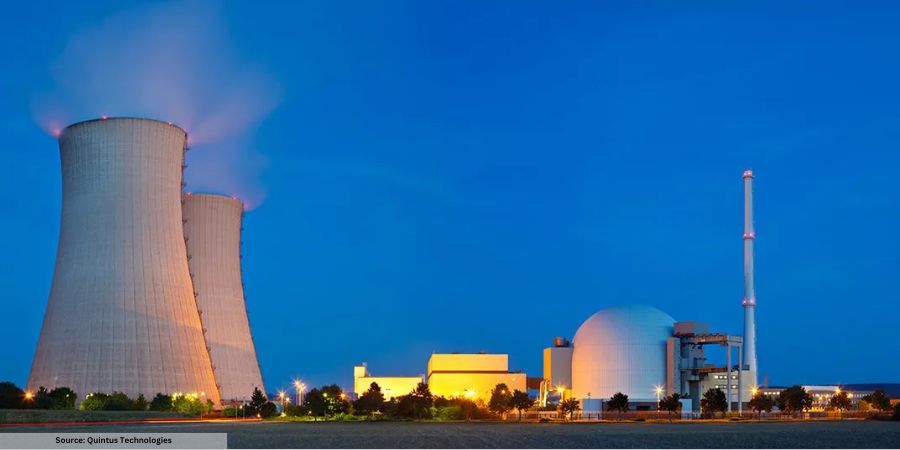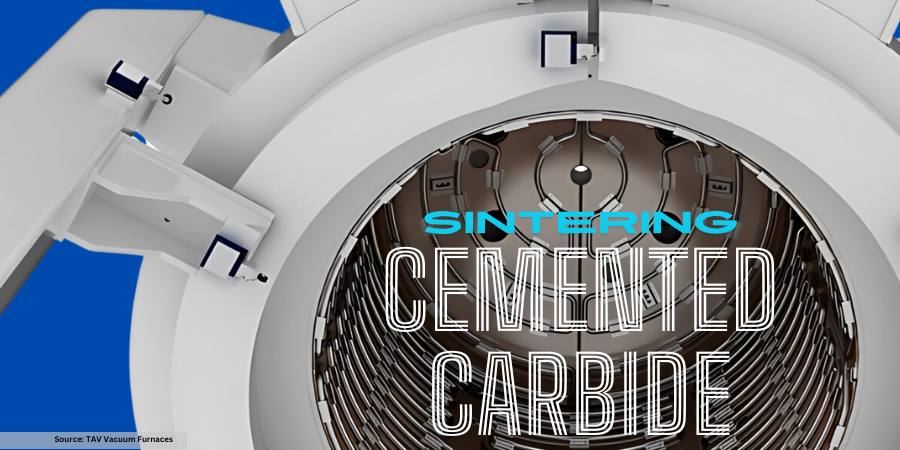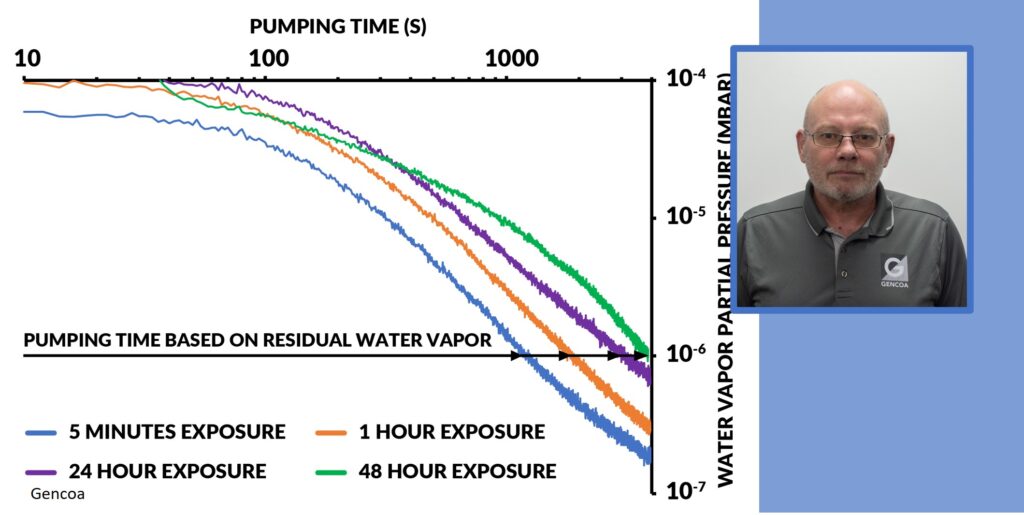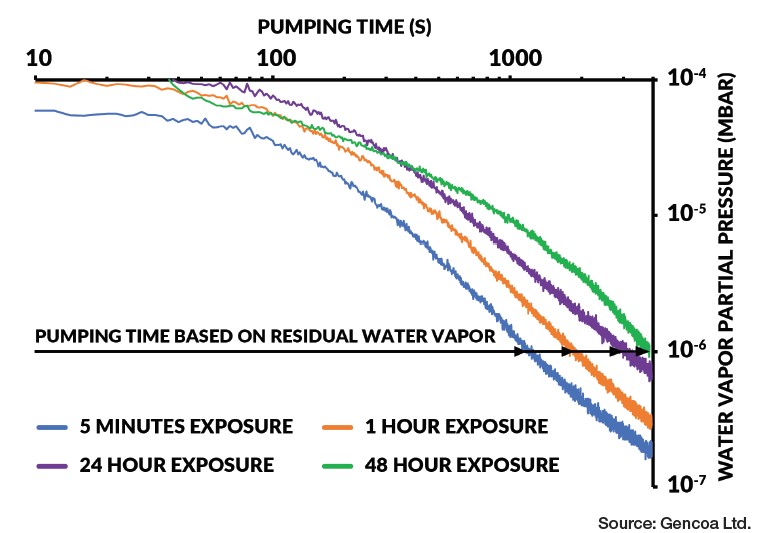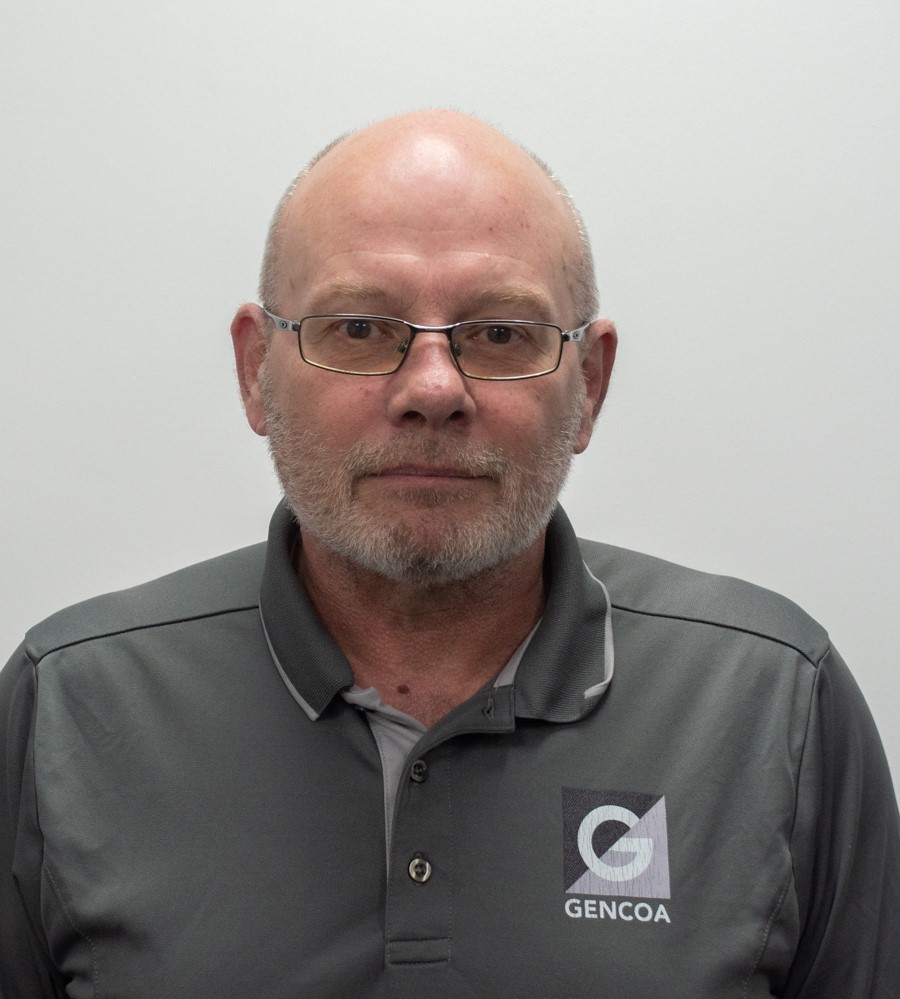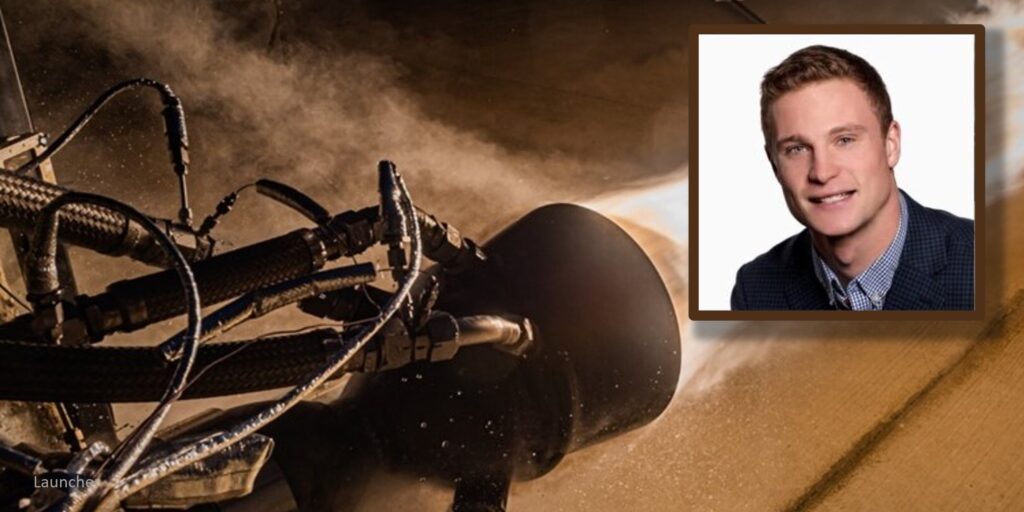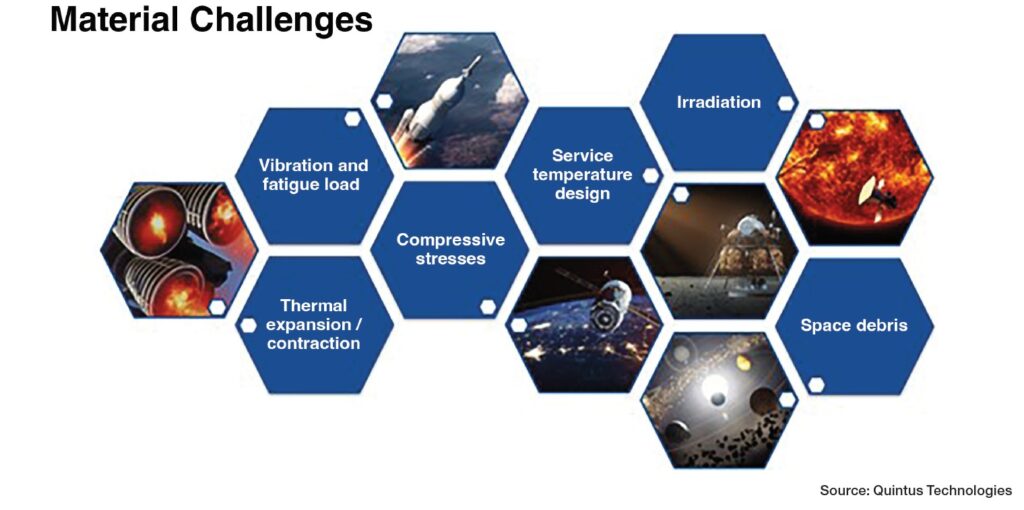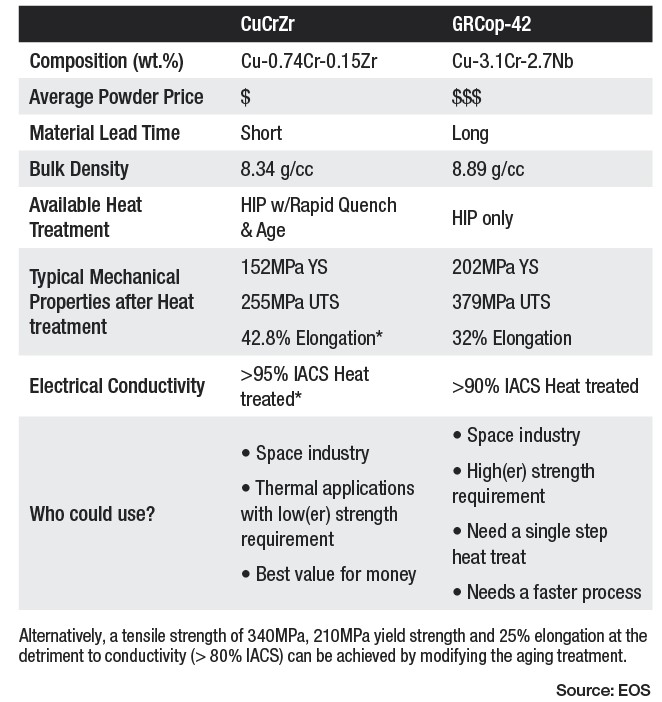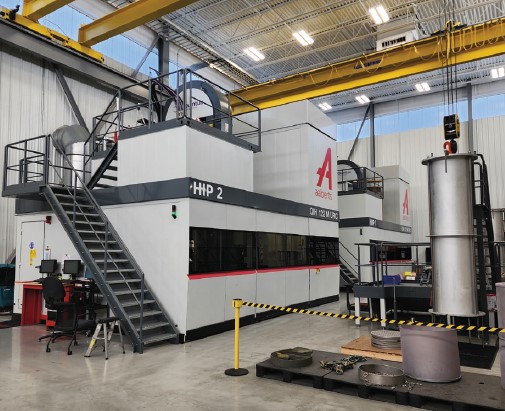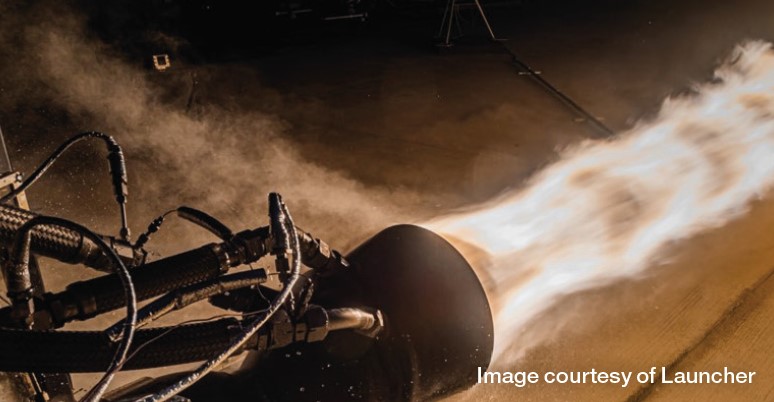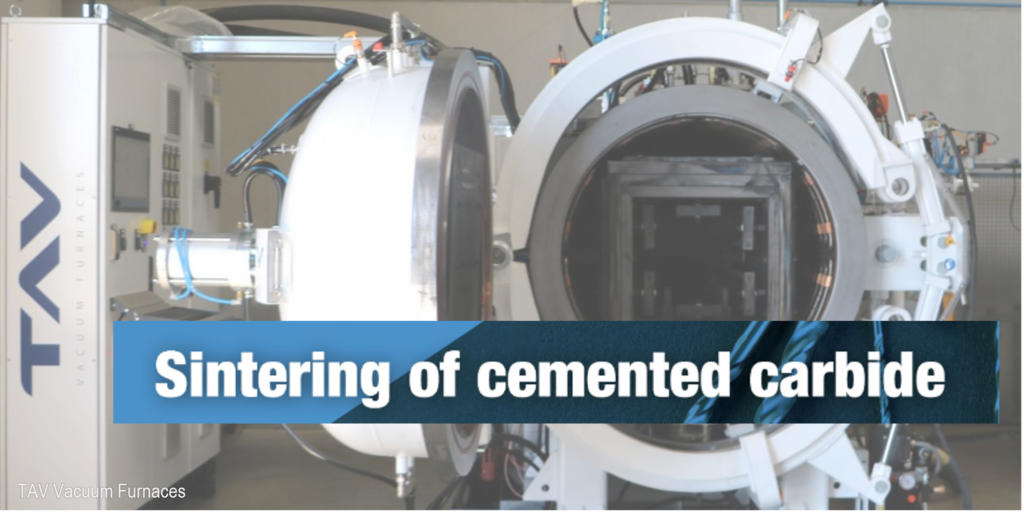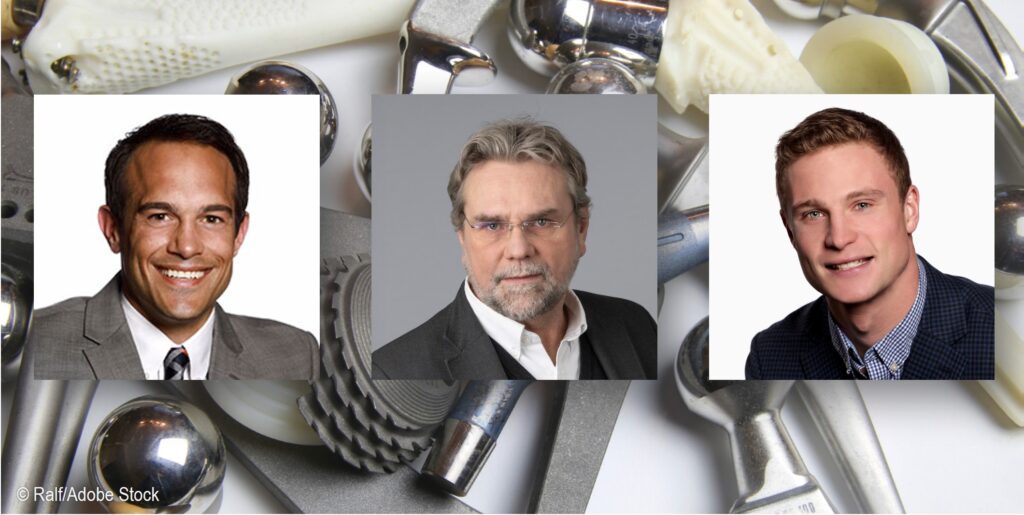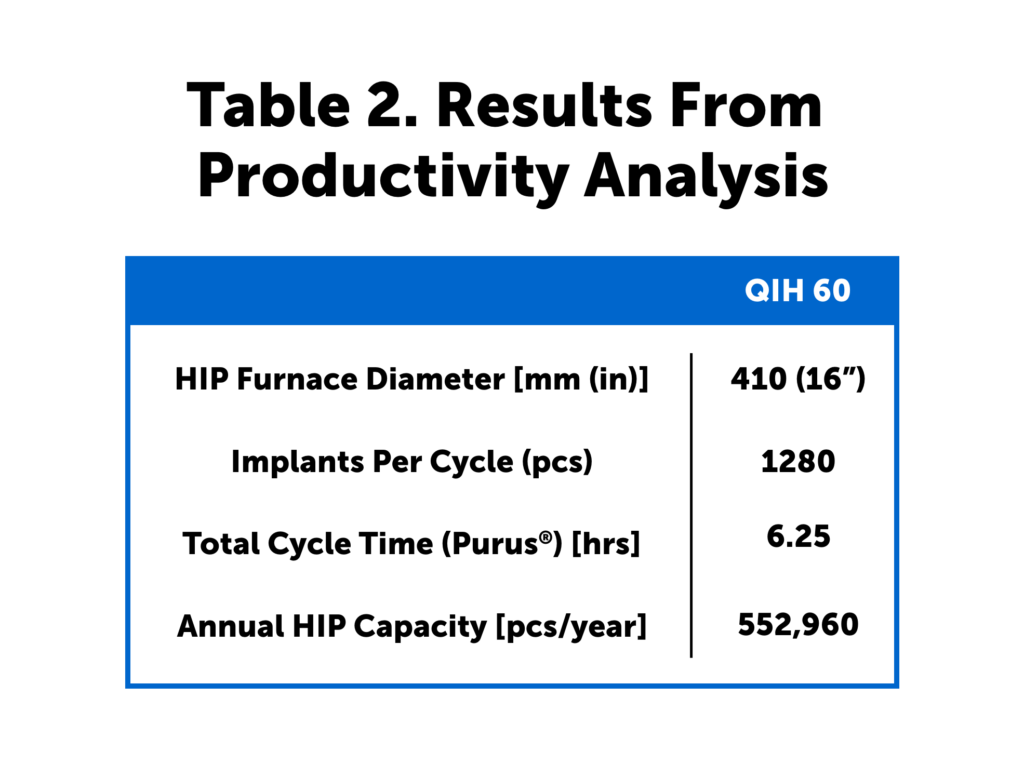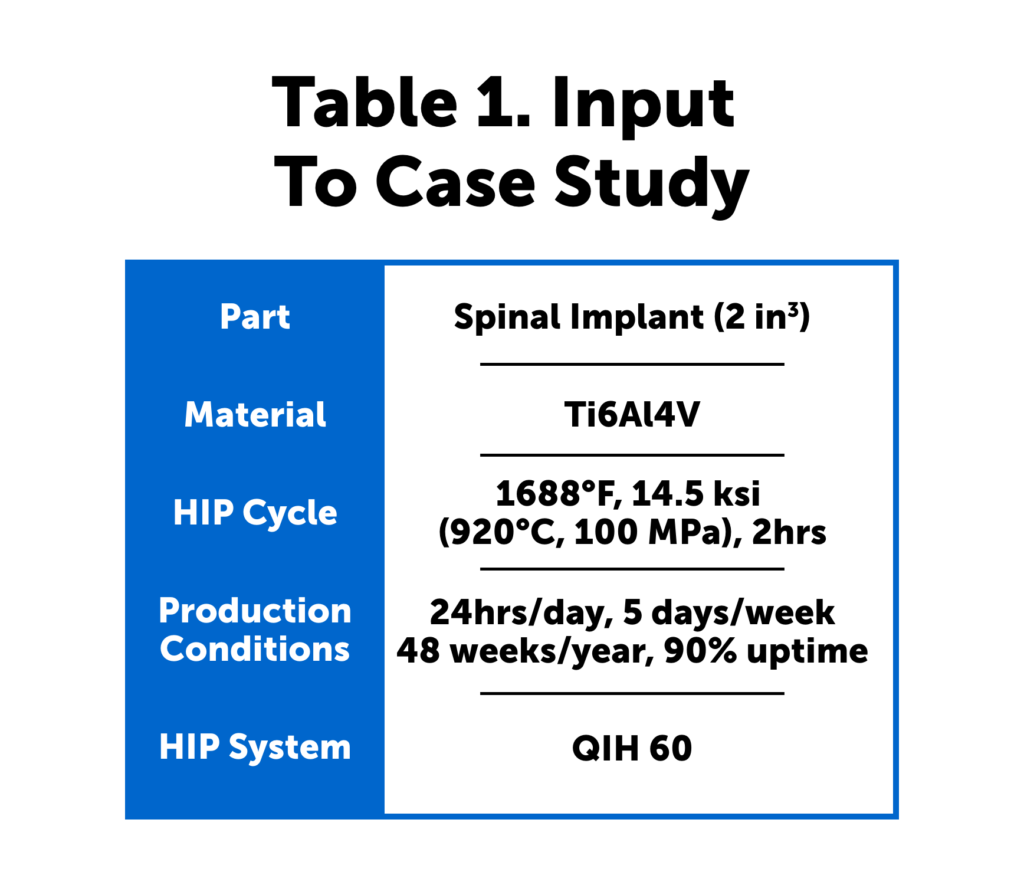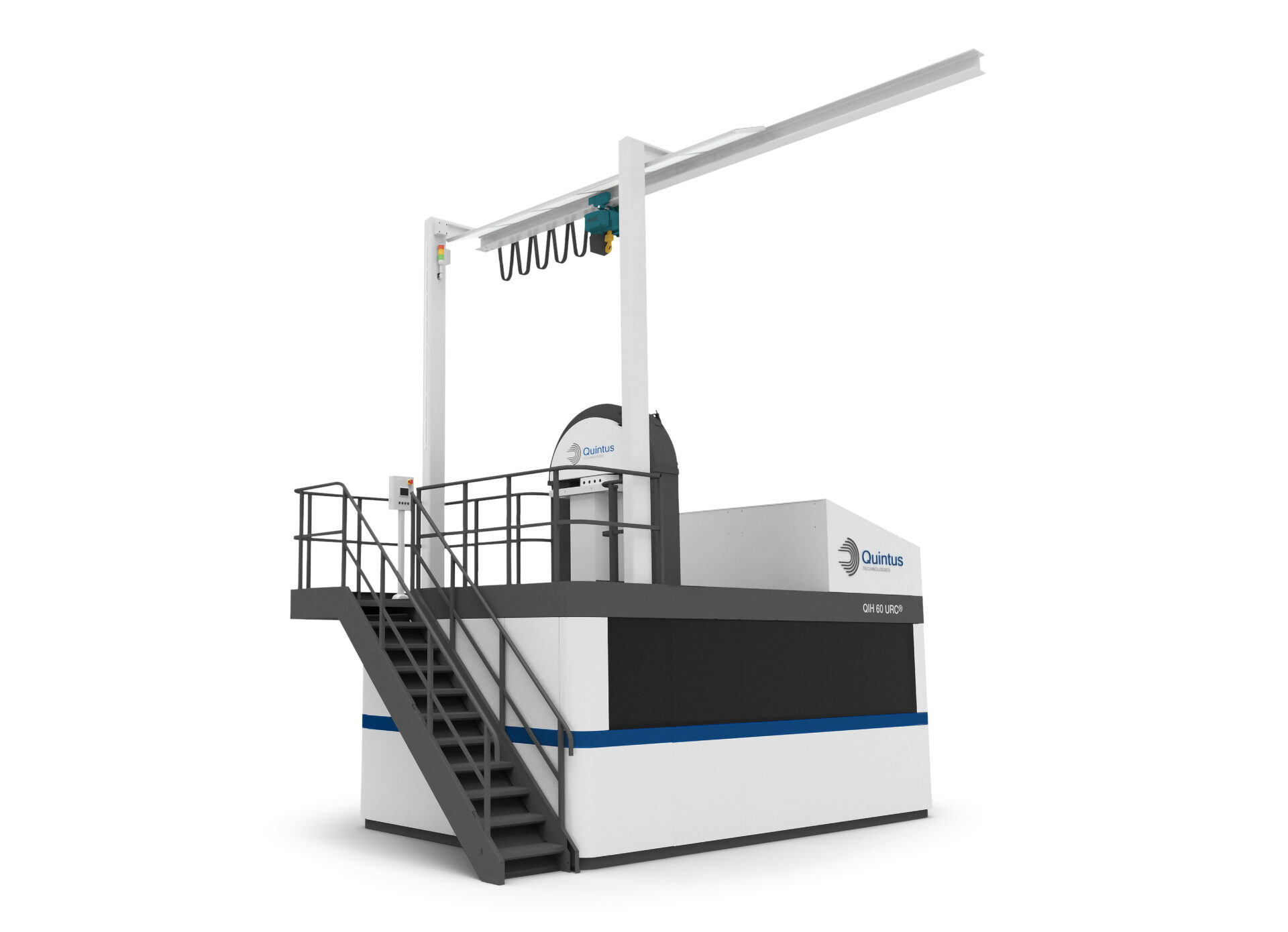Heat Treat Radio #126: HIP Finds New Life in Modern Manufacturing
Hot isostatic pressing, or HIP, is experiencing a powerful resurgence across industries from aerospace to nuclear energy as manufacturers look for new ways to scale up. This panel of HIP experts explores how renewed investment, government collaboration, and additive manufacturing are driving HIP’s next era of growth. From large-scale production to powder-to-part innovations, discover why this decades-old process is suddenly critical to the future of U.S. manufacturing.
In this episode, Heat Treat Radio host, Doug Glenn, is joined by Cliff Orcutt, American Isostatic Presses, Inc; Oscar Martinez, Bodycote; Victor Samarov, Synertech PM; Soumya Nag, Oak Ridge National Laboratory; Mike Conaway, Isostatic Forging International; and Dave Gandy, EPRI.
Below, you can watch the video, listen to the podcast by clicking on the audio play button, or read an edited transcript.





The following transcript has been edited for your reading enjoyment.
Introduction (00:05)
Doug Glenn: Welcome everyone to another episode of Heat Treat Radio. We have gathered a panel of experts to discuss hot isostatic pressing (HIP). I’ve asked the panel to bring us up to date on the latest developments and trends in the HIP market.
I want to jump into the questions here quickly so we can move through and let these experts do the talking. But I want these six gentlemen to very briefly introduce themselves.
Cliff, go ahead with your background, please.
Cliff Orcutt: Yes, I’m the vice president of the American Isostatic Presses. I’m also chairman of the International HIP Committee. I’ve been in isostatic pressing over forty-five years. I started building equipment and then began installing it. Now I’m mainly selling it. Our company is a small company which has supplied equipment to forty countries around the world.
Doug Glenn: Okay, very good. Victor, how about you?
Victor Samarov: I work for Synertech PM Technologies. My background goes back to the Soviet Union in Russia where I got my education and started to get involved in powder metal technology and HIP. I’ve been a part of pioneering the sophisticated and challenging tasks of building jet and rocket engines from powder materials and, since 2000, working in the United States in near net shape and net shape HIPing of parts and materials for critical applications.
Doug Glenn: Alright, thank you. That’s great. All right, Soumya, how about you?
Soumya Nag: Thanks, Doug, for having me. And good afternoon everybody. My name is Soumya Nag. I am a material scientist and metallurgist at Oak Ridge National Laboratory. I work on different types of materials and manufacturing processes to get large scale components.
The reason why I’m here is that I’m leading a big effort under the Department of Energy Office of Nuclear Energy’s a AMMT program — advanced materials and manufacturing technology program. This program actually looks at power metal HIP technology to make large scale components.
Doug Glenn: Super. And we’re going to talk about large scale things in a little bit here. Mike, how about you?
Mike Conaway: I’m the managing director of Isostatic Forging International, and we own operate and technically support about fifteen HIPs around the world.
I’ve had a lifetime involvement with HIP equipment design, construction operation maintenance. I started at Battelle when I was nineteen years old, I think. Cliff has got me beat on the youth point and maybe on a few other points too. Except for six years as a Navy pilot, I’ve done nothing else except HIP my entire life.
Our current development efforts are very large HIPs and very small HIPs at the lab scale tailored for additive manufacturing.
Doug Glenn: Appreciate your service, by the way, in the Navy. That’s great.
Mike Conaway: Well, it was great fun. Great to look back on.
Doug Glenn: Super. David, how about you?
David Gandy: Yeah, I’m a principal technical executive in EPRI’s nuclear materials areas. Doug indicated my background in metallurgy and welding for, I guess, the last fifteen years or so. I’ve spent time in advanced manufacturing looking at a variety of different topics, including PM and HIP. I have been in the business for a little more than forty years.
We’re all getting a little gray.
Doug Glenn: All well experienced, well-seasoned. All right, Oscar.
Oscar Martinez: Oscar Martinez. I’m the youngest of the group and learning from everybody here. I’m the regional sales manager for HIP North America, so I cover six different facilities in the North American market. I’m a metallurgical engineer by background. I have been in the oil and gas industry for about eight years with fader analysis and then jumped into HIP and product fabrication. Happy to be here; thanks for the invite.
Doug Glenn: Appreciate you joining us.
A New Renaissance of HIP? (7:41)
The first question really deals with what has been bringing interest back to back to HIP. It seems like a lot of what we’re hearing about HIP processing deals with 3D printing and additive manufacturing.
Is that the primary driver of the new renaissance of HIP?
Victor Samarov: No, I wouldn’t say so. Basically, there are three areas of “HIPing.” The first has been rising steadily through decades, and that is HIPing of castings. You take a bad casting and bring it to the level of a better material by healing porosity cracks and changing the microstructure.

The second area, which you mentioned, is 3D printing, which is, to some extent similar. HIPing of 3D-printed parts is similar to HIPing of castings, but there is more emphasis not on healing porosity but on changing the microstructure and making it more uniform and homogeneous. However, the parts are much smaller by far, and the share of the market is not large. Bodycote and others probably have a better understanding of this.
The third area is making parts from powders, which has been steadily at a relatively low level. This is because the only major industries interested in this have been aerospace, rocket engines, and oil and gas, all of which are well developed in Europe and Sweden. For example, there’s a company that has been doing very large parts for that for decades.
Recently, I mean the last fifteen years, we have to thank not only the Department of Energy (DOE) but David Gandy who was an enthusiast and a pioneer pushing this technology forward. There is much more interest from the nuclear industry in replacing very heavy forgings, which take years to fabricate and still usually are not good quality, by powdered metals.
This leads to open doors in many other aspects because most of the nuclear parts are large, and many of them are larger than the existing HIP furnaces. So large that it requires 4 meter, 3 meter, 5 meter, etc. — we can discuss. So, the new driver to PM HIP is mainly from the nuclear industry with large parts since they bring a lot of technical problems, serious problems.
This is very important, and this is the major perspective for HIP: rockets engines will still be there, aerospace will still be there, but nuclear is a new horizon.
Doug Glenn: David, what’s driving the new renaissance from your perspective? It seems that there is somewhat of a renaissance of HIPing, more activity. The nuclear market, will you address that?
David Gandy: Certainly the nuclear area. We are looking to build quite a number of reactors over the next 30 years. In fact, we’re discussing 600 to 800 gigawatts of new build, which is quite enormous compared to what we have today.
Much of this activity is being driven by things like data centers. There’s a lot of construction of data centers planned over the next ten years even, but certainly it will continue to grow. There’s a lot of additional power that is needed for things like electric vehicles. There’s a bit of work going on around that.
In general, as we modernize our world, electricity certainly becomes more in demand, and we have to meet those demands. The other part of this is just looking at carbon issues and trying to reduce the overall carbon footprint in the world. Nuclear electric power provides a very clean generating product that can be used throughout the world.
Doug Glenn: Larger parts seem to be a driver in HIP as well.
The issue with getting larger HIP parts is actually building the equipment to carry out HIPing because, as the equipment gets larger in diameter, for example, the complexity and the engineering of it becomes extremely difficult. Soumya, can you address this aspect?
Soumya Nag: There are very different aspects to what we are referring to when we say large parts. As you mentioned, in terms of whether you can HIP large parts, that is obviously a drawback. The other is, as you go into more complex parts or one-of-a-kind parts, can you make it cost effective and can you make it perform as well as your cast-forged counterparts?
That’s a big question. We have a sizable team at Oakridge working on looking at U.S. domestic manufacturing resilience. Can we actually make customized parts by different manufacturing modalities and use different materials that could fit to that manufacturing scheme to produce components that are built to perform the way you want them to?
PM HIP forms a big part of that portfolio. Using additive manufacturing along with PM HIP, which we call convergent manufacturing because we are converging two different manufacturing modalities using similar or even disciplined materials, is something that we are extremely focused on.
Now what is advantage of additive manufacturing? The big advantage to additive manufacturing is design flexibility and customization of the parts, which helps your end product. Like Victor mentioned, all aspects of PM HIP are still good in terms of the densification, powder consolidations, and other factors, that are still as you would expect it to form.
You are basically coupling a kind of technology: first, a newer process in the case of additive manufacturing with, second, one which has greater flexibility, that is PM HIP, a relatively well known technology.
Click below for HIP technical articles
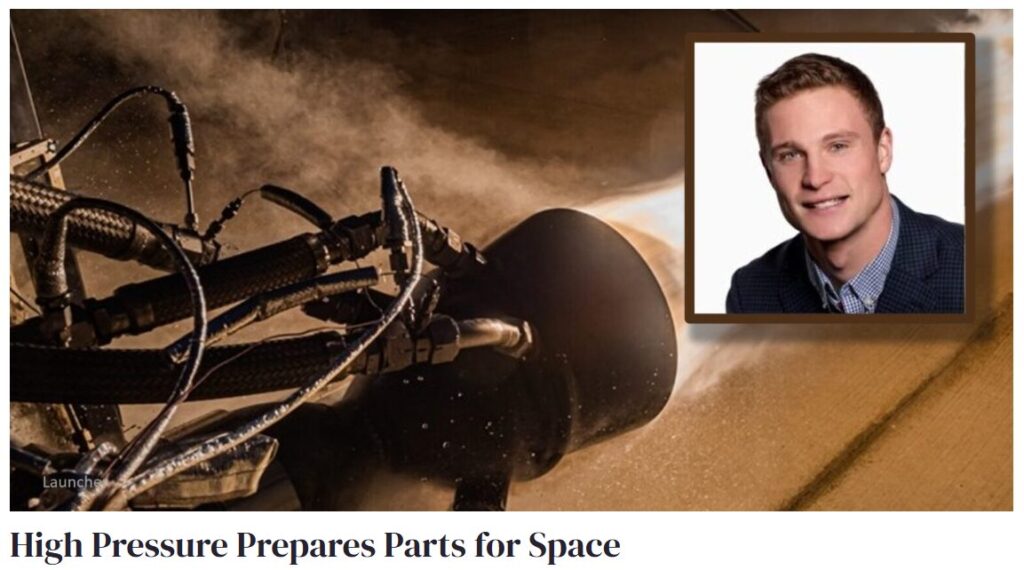

Doug Glenn: Let’s talk to the guys who are out there selling this process and/or building the equipment. First, Oscar, what are you seeing? What are the toll processing changes?
Oscar Martinez: The majority of what toll HIP service is going to see is castings by a magnitude of 60 or 80% of the business as a whole as of now. I have seen a lot more over the last couple of years on 3D printing and additive manufacturing.
I do want to say that additive manufacturing has been growing in different markets as well. In the medical market, it is a little bit more established. We have seen the medical market take on some of the porous coating and those new technologies that help. Within the aerospace market, I think it’s getting closer and closer to being more of a critical component.
There is still a gap between those two industries. However, the business is starting to grow. For companies that are doing this, I’m noticing they are increasingly starting to get involved in having additive manufacturing either in-house with their own machines or through a sub-contractor. I do agree that in the near future castings are always going to be predominantly the factor.
The last aspect is there has to be a cost analysis. Your absolutely right on this, Victor. I’m seeing it on the additive manufacturing side; they want to implement rapid cooling and they want to implement different cycles and different properties to get various properties from the material itself. However, there’s a difference whenever we’re talking about toll HIP service. If they want to do those, then those fall into dedicated cycles, which are much more expensive.
So, there has to be a kind of in between where we consolidate features and processes, because price is going to be the leader in terms of how fast it grows in the market.
Doug Glenn: Mike, what are you seeing in your organizations?
Mike Conaway: We’ve run about 250,000 HIP cycles, and 95% of those are castings.
To lay the foundation of what we consider a small or large part: to me a small part is something that’s less than 8 inches in diameter, a medium-sized part is maybe 2 feet, and current large parts are about 5 to 6 feet in diameter, though we are now trying to make parts that may be as large as 12 or 15 feet in diameter.
We have to have some idea of what scale we’re talking about of these parts. That being said, we are essentially all castings, with very little powder metal.
Doug Glenn: Cliff, any drivers that you’re seeing for HIP?
Cliff Orcutt: The main driver is that as the world keeps advancing and as we have higher technologies and computers with FEA and so forth, we’re looking for stronger, lighter, faster materials.
The performance of materials in general is increasing throughout every industry, whether that’s a car or an airplane or a printer. Also, the technology is spreading worldwide faster because communication and the internet. I believe the United States used to have the lock on HIP, and now China and Russia and other places are all on par with us. It’s spreading throughout the whole world, and it snowballs too.
Initially, it was slow, but now it’s snowballing faster and faster. 3D printing is an exciting technology that has brought about new applications, but I think even other applications are just growing faster and spreading.
The Origin of HIP (20:12)
Doug Glenn: Is the origin of the HIPing process U.S.-based?
Mike Conaway: It’s like asking, “who had the first airplane?” Everybody agrees it was the Wright Brothers. Similarly, it’s agreed that HIP was invented at Battelle Memorial Institute in Columbus, Ohio. I came to Battelle a few years after it was invented, and I was in on the industrialization of the process. Obviously, some serious work has been done in Russia and China, but that’s where it came from. That’s where Cliff’s father and I worked together — at Battelle — and we consider ourselves “Fathers of the Industrialization of the HIP Process.”
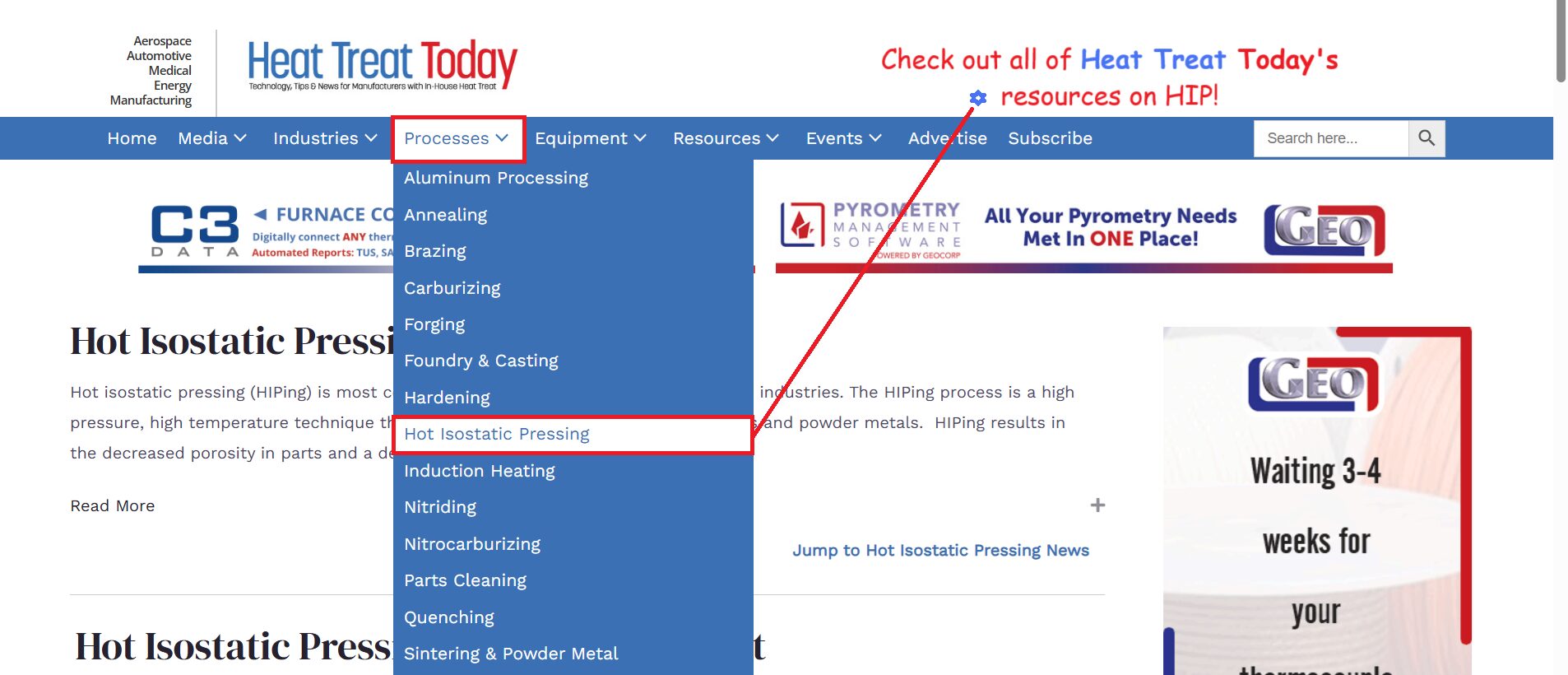
Doug Glenn: You’re not going to take credit for creating it, though, for the internet?
Mike Conaway: No, no, that was Edwin Hodge, Stan Paprocki, and Henry Saller.
Doug Glenn: Well, your humility is showing through here, Mike.
HIP Worldwide (21:37)
Doug Glenn: Let’s address how the technology is spreading across the world.
Are there any major new players either on the manufacturing of equipment side or the use of the equipment side around the world?
Cliff Orcutt: There are both players, manufacturing, and end users. As far as manufacturers, we’re now seeing there are five Chinese domestic manufacturers. There are new ones in Russia, Korea, and India. There’s also a major player in Spain; that’s Hyperbaric. They have been building high pressure equipment, but not necessarily HIP. We see companies like that opening up and starting to build. We don’t know which ones will survive, because HIP is an up and down market. We’ve seen some companies come and go — vacuum generators, and on and on. We will see how it will all play out.
We have seen new manufacturers, as far as users or toll producers. There are large companies in China now starting up. Korea has some, India is probably the next big market, maybe ten years behind.

Victor Samarov: I want Cliff to add more, because Cliff has wonderful stories. We’re talking mainly about metals, but Cliff is a great proponent of ceramics, and ceramics not only has great applications but requires different HIP equipment for high temperature and for high pressures. Ceramics is also the future.
Cliff Orcutt: Yes, we do see a lot of ceramics. Everything from braces and teeth to ball bearings for electric motors, boron carbide armor, military applications, hafnium carbide, and odium carbide. Those things are coming.
One of the hindrances to HIP is the cost of raw materials. People tell us, if you could make silicon nitride powder cheaper, we’d HIP everything out of silicon nitride.
Soumya Nag: One thing I wanted to add is we talked about HIPing cast metal parts and several materials: HIPing is also used to densify or “heal” additive parts as well. You can look at an AM part, and we usually go through a HIPing process to kind of heal what we call the lack of fusion type of porosities, or even in some cases the gas porosities work as well if your operating temperature is not too high where the gas can come out again. HIP is being used for a lot of use cases for castings. You can actually HIP using powder for alloys that cannot be forged. So that’s another specialized use case for HIPing as well.
Interactions with the DOD and DOE (25:16)
Doug Glenn: Let’s jump into discussing how the DOD and the DOE are pressing hard on the industry to come up with a 4-meter HIP unit.
David, can you tell us what the driving force is here, what we’re trying to accomplish, and why it’s a challenge?
David Gandy: So much of this started back around 2017 when we started a DOE project. In that DOE project, we were looking at utilizing the new scale reactor design to try to produce components out of powder metallurgy HIP. We worked with Syntech quite a bit in that area, trying to build large components like the reactor head and other parts throughout. Those, ultimately, would go to about 10 feet in diameter. We are currently restricted right now by the size of the HIP units that we’ve been working on, so we’re only making things on the order of 60 or 70 inches.
The real driver there comes out of our success in producing very large components that are near net shape — we would like to be able to expand that to be able to do very large parts. The 4 meter came from a little bit of the work around the projects with the Department of Energy (DOE). It also came from DOD, which was beginning to look at whether we can actually make big parts for nuclear reactors that sit on a submarine, an aircraft carrier, or another boat.
How do we actually make some of those large parts? There is quite an interest from the DOD and from the DOE in trying to really push the technology. We kind of settled in that 4 meter range; it might be a little bigger, it might be a little smaller, but to make some of the large parts that we’re talking about, we need to have a much larger HIP unit than is available today.
Doug Glenn: Are the larger parts for a nuclear reactor specifically or are we talking about a variety of different large parts?
David Gandy: Parts of them are for the nuclear reactor, but there are a number of other components, like large valves or large pump housings — many different components that could be produced with this technology.
Doug Glenn: What are the main impediments to a 4 meter HIP unit?
Cliff Orcutt: Like anything that’s new, there are unknowns, and the big one is the ROI along with the cost of doing something on that scale. Many of us are looking at it; companies such as Bodycote are considering larger units and MTC is considering larger units. The U.S. government at one time had the largest HIP in the world. Now it’s owned by Japan. We are hoping the U.S. government will step up and try to do a large project again.
“There’s unknowns and the big one is the ROI and the cost of doing something on that scale.”
We went to the moon and we did other things, but we’ve kind of pulled back. We hardly have large forging capability in the U.S. anymore, and we need to invest in these kinds of technologies and push this forward.
David Gandy: I’d like to build just a little bit on what Cliff said. In terms of building reactors in the U.S. to support the civil fleet — the civil nuclear reactors — quite frankly, we don’t have the forging capacity in the U.S. that we once had to do that.
So this would actually supplement the forging capabilities and allow us to reshore some of those capabilities in the U.S.
Oscar Martinez: That is a good point, David, and it is part of where PM HIP will jump in and bridge the gap between the two.
One thing I wanted to mention regarding what Cliff said about the ROI is that the biggest factor for HIP companies — like Bodycote and others out there — is making sure that we have the nuclear side. We have already seen what the ramp up is going to look like and everything.
For us, if a HIP unit is not running, it’s not making money. So, we need to make sure that HIP unit is always running, and that it’s going to pay for itself. With these large units, the price of it doesn’t just double from previous one, it exponentially goes up.
Victor Samarov: Double? It’s quadruple!
Oscar Martinez: I know the DOD and DOE are working closer together to have more synergy in terms of what components they need to process. But I also think that in the industrial side of things, like general industrial, anything with heavy equipment, any of those components that probably were not something liable to use of HIP because of the size or price, it would be good to start looking at how we can incorporate those other markets to see if they would also use some of that equipment or those HIP services for their equipment.
David Gandy: On the DOD side of the house, we have something called AUS, which is the agreement between Australia, the U.S., and the UK, wherein we’re actually going to be building quite a number of ships and submarines over the next few decades. That’s going to change the way we look at our supply chain. In trying to build these components, we need to have additional forging, casting, additive manufacturing, and HIP capabilities — we need to have it all. It cannot happen without a number of different technologies engaged.
The Path to Commercial (34:00)
Doug Glenn: In discussing these additional needs and supply chain logistics, Victor mentioned that the commercial viability of the 4 meter is difficult. Victor, could you expand?
Victor Samarov: If ATLAS HIP appears tomorrow, we’re ready to make parts with it. There is powder supply and we know how to make the casts. With some small underwater stones, we can make the parts, but we’ve been waiting for this HIP system for at least ten years.

There is no commercial company to build it, and there is no commercial company to order it unless it’s the U.S., Chinese, or Korean government. The technological idea is based on very advanced developments done by EPRI and other scientists in joining already manufactured power parts.
We did try it already. We made very large parts that were cut in half and then joined by electron beam welding. It may be this faster route to provide U.S. industry with very large parts: first make parts as large as they can be and then electron-beam weld them.
Working with David Gandy’s new scale projects, one part was so large that we had to split it into six segments. So, we made the segments and then they were successfully electron-beam welded. Practically, we were keeping all the advantages of powder metallurgy and HIP: lead time, material quality, faster development, so on and so forth. So, this may be a very viable direction.
Doug Glenn: Mike, is that the path to commercial viability?
Mike Conaway: I’m not quite sure. I call it jumbo additive manufacturing where you make these parts that have to be cut apart in, in concept, and then put together physically — that’s the additive manufacturing of jumbo parts. I think it’s a great idea.
We are looking at the same sort of idea. To make a very large HIP, we would make it as a composite of segmented pieces that fit together. We call it the Lego HIP. That’s an approach, and we’re still working on that.
Oscar Martinez: To add to something Cliff mentioned about going in between. We’ve talked about ATLAS, and I think Victor mentioned it too.
From a commercial standpoint, I think it would be beneficial for us to venture into a kind of in-between size that does give us capabilities and proves out what we have to do. That would be probably a step in the right direction of where we need to be, because it will cover a lot of the components that we are not able to see.
The oil and gas industry also has some components, and even on the IGT and aerospace side, if we go in between on some of those things, they will then design based on that size. If we’re looking at just commercially what HIP unit makes most sense for us to run, toll HIP services is always going to be between the 30 to 45-inch zone because it is able to fill in quickly.
But again, that’s the biggest challenge. If we to go to an in-between larger component, what else could we bring in there that we could run all the time and make commercially viable for whoever jumps in — whether it be Bodycote, anybody else, or a collaboration — that it actually makes sense to be used.
Cliff Orcutt: From an economic standpoint, if you’re only building one 4 meter HIP and you have to decide whether it goes to the East Coast or West Coast — that’s a tough decision. But if you build a couple 2 meter HIPs, you could afford to put one on the West Coast and one on the East Coast, and you solve not only the submarine building on the East Coast, but you might solve some of the SMR building on the West Coast.
Doug Glenn: Or you put a 4 meter HIP in St. Louis and that takes care of it all.
Cliff Orcutt: If you can get it there.
Doug Glenn: Yes, if you can get it there, correct.
Powder to Part (37:05)
Doug Glenn: Let’s talk about powder to part. What is it, what current processes might it replace, and what are the obstacles to using it?
Soumya Nag: At Oakridge, we are testing whether you can actually make custom powders, scale up that powder production, and then utilize PM and AM, or different type of modalities, to make large-scale parts or customized parts. With powder to part, you have a powder and you have a certain chemistry specification for that powder. Can we actually find out whether we are going to have a PM HIP as a plausible way to make the part out of it? Make a mold, fill it up, and predict how the part will behave in the post-HIP, the machine changes, etc., and then inspect the properties.
One more caveat: When we talk about powder, where is the powder coming from?
We have to look at the feed stock that has been used to make the powder and ask: What is the chemistry of the powder? What is the shape of the powder? What’s the flowability of the powder? The physical and chemical properties of the powder itself?
Doug Glenn: Dave, what appears to be the most promising avenue to bring this about?
David Gandy: Well, I think one of the things that you’ve really got to consider for powders is powder cleanliness.
We’ve worked quite a number of years on trying to reduce things like oxygen in the powder so that as you consolidate that component, you don’t end up with oxides that are trapped at the grain boundaries or prior particle boundaries. It’s very important that we get powder manufacturers to work with us to bring the technology forward.

“Reduce things like oxygen in the powder so that as you consolidate that component, you don’t end up with oxides that are trapped at the grain boundaries or prior particle boundaries.”
In addition to that, if we start making very large parts in a 4-meter HIP unit, we’re going to have to really scale up our powder production capabilities in the U.S., and quite frankly, that’s not happened at this point.
Doug Glenn: They’re not going to want to upgrade their powder manufacturing if there’s not a market for it.
Victor Samarov: Yes, exactly. One really large part may need a hundred thousand pounds of powder in it. We have already completed these calculations. I completely agree with David.
One more piece I want to add: From powder to part, all the processes, except HIPing and maybe ceramic, are based on melting the material and then giving it some shape. Cast and rot investment casting, even additive manufacturing, is based on melting every particle. However, when powder metallurgy started in the ‘80s in the U.S. aerospace industry, the basic advantage it was looking at was the quality of the powder particles themselves. As you know, as heat treaters, the maximum cooling rates in cooling the billet are some hundreds of degrees per minute. But the powder particle crystallizes, and it crystallizes at the rate of 10,000 degrees per second because of its very tiny size. So, it can freeze almost any type of unbalanced metastable microstructure in it.
HIPing is a solid-state bonding process. Nothing is melting in HIP. This means that during this process, we can retain this unique microstructure of the powder particles and then create and transfer this to parts of any size. For steel alloys, it may not be so critical, but for nickel base and some other alloys it’s absolutely essential.
The caveat here is that going from powder to part via HIPing, you can create very large parts with unique properties brought by the rapid solidified powder particle materials.
Doug Glenn: Mike, anything you’d like to add on the powder to part?
Mike Conaway: No, I don’t have anything to offer much there.
We’re intrigued with the additive manufacturing. Our focus has been on the binder jet that’s based on sintering where I think it offers a lot more advantages than it does to the laser fusion approach.
Oscar Martinez: From our end, we’ve been doing this for a while already in Sweden with the oil and gas industry being a major, almost an established, process. However, one thing that I did want to bring up is not only is there a challenge with the current powder suppliers in the U.S. — there is some movement in terms of bringing new suppliers —but whenever we’re discussing some of these components being so critical, where the powder is coming from is going to also be critical. As David mentioned, just as much as the HIP needs to be ramped up and that large unit needs to be built, just as quickly we need to do the same thing with the powder suppliers as well. If we need to keep it in-house, the U.S. is going to have to grow very quickly as well.
Doug Glenn: Much of what was discussed at Oak Ridge recently by the DOD and DOE was about bringing home the supply chain, including powder production.
Cliff Orcutt: The technology of making parts concerns how to model those parts and how to predict shrinkage.
There’s people that understand it but making it more accessible to companies is key to expanding the market for it.
David Gandy: We are currently working with Oak Ridge National Labs and a few others to look at bringing modeling to your laptop, basically to allow you to do modeling for the HIP process, very similar to what maybe you do with forging technologies today, where you can have that capability to design as a conventional engineer. What we’re trying to accomplish in working on this project is really looking at how we make modeling more mainstream for industry. As you make the modeling portion of this more mainstream, then the HIPing technology becomes more mainstream. The more people are exposed to it, the more people are engaged in it, the more companies want to work with it. I’d also like to thank Victor Samarov because Victor has certainly been a huge proponent of this and of trying to help move the technology forward.
Oak Ridge National Lab (48:07)
Doug Glenn: Soumya, I understand Oak Ridge National Laboratory has taken an active role in the PM HIP market. What exactly are you guys doing there what are you hoping to accomplish?
Soumya Nag: We want to make components that are relevant towards nuclear in the DOE space as well as national security in the DOD space. That’s where the drivers are.
The first thing I want to mention is that we don’t want to replace your traditional manufacturing, casting, or forging by any means. As Dave was mentioning, the need for production is going to ramp up so high within the U.S. that we will need alternative manufacturing pathways to really augment some of the troubles we have on supply chain side.
PM HIP is one of the technologies that we have chosen. Under PM HIP, we have done three things. First, can we actually use an AM, what we call a directed energy deposition process or WAM, our AM process, where we are basically making these five mile long wells that are used as a shell for the outside surface. Can that withstand the temperatures, pressures, and times (i.e., a reactor or pressure vessel), can it actually withstand that cycle? So that was the big thing: Can the five mile long well actually withstand that temperature, pressure cycle, and then move or deform during the HIPing process without a failure?
Secondly, if you look at a traditional HIP cycle, what does that temperature, pressure, and hold time do to the material? Can you break it up into ramp up time, ramp up pressure, ramp up temperature, and then hold time, etc., and see microstructural changes, property changes, performance changes as a function of each of these segments that we use or take for granted for the HIP cycle. Those are more science-driven questions that we need to answer. Thirdly, where some of the challenges that we have encountered [with scalability]. When we did a PM HIP workshop here at Oak Ridge last year in October, we had about a couple of hundred people show up from academia, national labs, DOD and DOE, customers, stakeholders, etc. The question was, what is the scalability of a part when you go from a small to large part or small to a more complex part in terms of powder compaction, size and scale of the powders, property variations, and chemistry? That is another PM HIP question that we are trying to solve.

At the end of the day, the goal is to make sure that the industry can adopt this more freely and employ it for large scale production. Then, also giving them the option of using additive cans — a more customized shell. The good thing about AM and PM combination, if you choose that, is that you can use AM can as a “shell,” which you can remove afterwards or keep. When you keep it, you are basically looking at a HIP-clad type of option where you can use similar or dissimilar materials and depending on the functionality of the surface versus the core, you can utilize that combination of two materials with two different manufacturing modalities.
I think the workshop that we had in October last year was exceptionally well received from our end. It was driven for the voice of the customers — what does the customer want from us? What are the gaps and challenges around PM HIP that would really remove some of the angst that they have.
That was the first thing that we did, but we also had people from the powder side, from the modeling side.
Victor was leading the attendees, Dave Gandy was there giving plenty of talks about the need for PM HIP. Cliff was there talking about the utilization of HIP as a technology. We had industries from every bit of the segment come in and they wanted to help.
The thought was, can we actually take personal spaces out and then talk and have a cross interaction across industries to try to solve a problem on national level. Like Victor and Dave said, we need our government to instill the idea that this is an important technology for the country. Can we move towards this? We were facilitating that and saying what the voice of the customer is. This is what everybody wants. The demand is absolutely there. Can we actually build on it?
At the next workshop that we plan, we want to actually talk about real parts. We will be bringing in real parts to see how we can make it PM HIP. What are the success factors around it? I think that would be more end-product driven rather than the science part of the discussion.
Doug Glenn: Yes, more practical and specific and less theoretical, if you will, but not that it was all theory.
Soumya Nag: We have an active PM HIP steering committee with about twenty people from industry. Dave, Victor, and Cliff are a part of it. They have been tremendous in terms of providing us with guidance and seamless thoughts in terms of how we should move as an industry.
Doug Glenn: Is that next workshop scheduled?
Soumya Nag: Not yet, but that is in the planning process right now.
Doug Glenn: We’ll certainly help publish that when the time comes, so keep us posted.
Soumya Nag: We have a report from the first workshop that is in limbo right now, but we will publish it relatively soon.
It discusses what we learned from the workshop, the gaps and challenges, and how we should move forward. We have about a 60 to 65-page report that we compiled from that workshop. These are the demand signals for everybody that we compiled together.
Doug Glenn: Let us know if we can help you publish that as well and help you get it out to the right people.
Toll Manufacturing vs. Ownership of Equipment (55:47)
Doug Glenn: Cliff, let’s discuss the differences between toll processing and ownership of equipment. When it comes to HIPing, does it make sense for manufacturing companies to send their HIPing out to toll manufacturers or is it better to buy your own equipment?
Cliff Orcutt: That’s an economical question that you have to calculate and look at. Number one, if you only have one part, you’re not going to buy a HIP unit.

But if you have the quantity and the quality, and the cost works to the favor of owning your own HIP unit, then you should purchase it. However, if you also don’t have the floor space, location, people, or infrastructure to support it, then sometimes it’s easier to toll HIP. If you’re in the middle of nowhere and your parts are lead, and you can’t afford to ship them, then you might want to have your own HIP unit located in your facility. It’s important to analyze these aspects to decide if there’s ROI and if it’s the best way to economically make your parts.
Doug Glenn: Mike, what are your thoughts on toll processing versus owning your own?
You plan the investment for it. There may be tipping points, I don’t know how to quantify those. But I think that Cliff’s remarks are well taken. It’s a little bit complicated and you have to have a believer; let’s say you’re a user of HIP equipment and you’re getting it done by toll. Sometimes you don’t want to have it; you don’t have anybody in-house that has insight into HIPing and therefore is not a champion for it. I recommend toll HIPing until you can’t afford it, and then we go in-house.
Used Equipment Market for HIP (58:26)
Doug Glenn: Let’s discuss the International HIP Conference.
Cliff Orcutt: The 2028 conference is going to be held in South Korea in the town of Busan, very beautiful. And it’ll be a great conference, so we’re hoping to have over 200 people at it.
It will cover all aspects of HIPing, not just powder metallurgy, but it’s all the latest technology from the makers, the toll people. Everybody that’s in the HIP industry is usually there from all countries. Hopefully by 2028 we can have the Eastern Block Country there attending again as well.
Doug Glenn: If I remember correctly, it was in Columbus in 2022.
Cliff Orcutt: Yes, 2022 in Columbus, 2025 in Germany. It moves from USA to Europe to Asia every three years.
Doug Glenn: The committee is a group of people who have a common interest in putting this together.
Mike Conaway: Yes, it’s group of enthusiasts.
Doug Glenn: The most recent one was this year in Aachen, Germany, right?
Mike Conaway: Yes.
Doug Glenn: How many people attended that one?
Victor Samarov: Around 250.
Doug Glenn: HIP 2025 is currently on the website, and then when you’re ready, you’re going to have a HIP 2028.
Cliff Orcutt: It’s reserved, and it’ll be coming online probably next year.
The paper from 2025 has been released and made available to people.
Doug Glenn: Anybody else have any other comment on the HIP event?
Soumya Nag: It was my first time going there.
I felt that it was a great exposure to what the world is doing on the PM HIP side. Sometimes we are bottled down in what we are doing in the U.S., and we think we are doing the best thing in the world. That’s not true. There are countries who are superseding us and they have ideas and thoughts and future goals which are very possible for them to succeed. We want to make sure that we learn from them and really act upon that.
Cliff Orcutt: One thing we might want to mention is the Metal Powder Industry Federation, MPIF, for about 15 years has been promoting it as a green technology. I think that we all could agree that we should lean green, towards green things.
There’s less energy usage, less machining. It’s a near net shape technology, and so even if it does economically cost more, we still should look at it from that green aspect, I believe.
Doug Glenn: And you’re talking just about HIPing in general or PM HIP?
Cliff Orcutt: Mainly PM, but all forms of would be more of a green technology compared to your big carbon melting type technologies.
Doug Glenn: Good point, Cliff, thank you.
All right, gentlemen, thanks very much. I appreciate your time, your expertise, and it’s been a pleasure talking with you all.
About the Guests

Managing Director
Isostatic Forging International
Mike Conaway is the managing director at Isostatic Forging International. He began in the HIP field at 19 years old, where the process was invented and developed (Battelle Institute in Columbus, Ohio). Many consider Mike a pioneer in the business of HIP equipment: analysis design, construction and operations. He has ten issued patents related to high pressure design, and received the Lifetime Achievement Award by the International HIP Committee.
For more information: Contact Mike at conaway@hot-isostatic.com or visit his LinkedIn.

Principal Technical Executive, Nuclear Materials
EPRI
David Gandy is the principal technical executive in the Nuclear Materials sector for EPRI. He has 40+ years of experience in materials, welding, and advanced manufacturing. He is an ASM International Fellow and currently also is a member of ASME Section III.
For more information: Contact David at davgandy@epri.com or visit his LinkedIn.

Regional Sales Manager
HIP North America, Bodycote
Oscar Martinez is the regional sales manager of HIP North America, Bodycote. He is a metallurgical and materials engineer with a degree from the University of Texas at El Paso. In 2022, he took his current position for the Hot Isostatic Pressure and Powdermet® divisions at Bodycote IMT, serving the North American market.
For more information: Contact Oscar at Oscar.Martinez@bodycote.com or visit his LinkedIn.

Group Leader of Materials Science and Technology
Oak Ridge National Library
Soumya Nag is in the group leader of the Materials Science and Technology Division at Oak Ridge National Laboratory. His research interest is understanding processing (additive and conventional) — structure (phase transformation across different length and time scales) — property (mechanical and environmental property) relationships in light weight and high temperature structural alloys.
For more information: Contact Soumya at nags@ornl.gov or visit his LinkedIn.

Vice President
American Isostatic Presses, Inc.
Cliff Orcutt is vice president of American Isostatic Presses, Inc. and has been involved in more than 200 HIP installations in 25 countries over a 48 year span. Orcutt is Chaiman of the International HIP Committee , helping to organize the HIP22 and HIP25 conferences to spread HIP knowledge.
For more information: Contact Cliff at corcutt@aiphip.com or visit his LinkedIn.
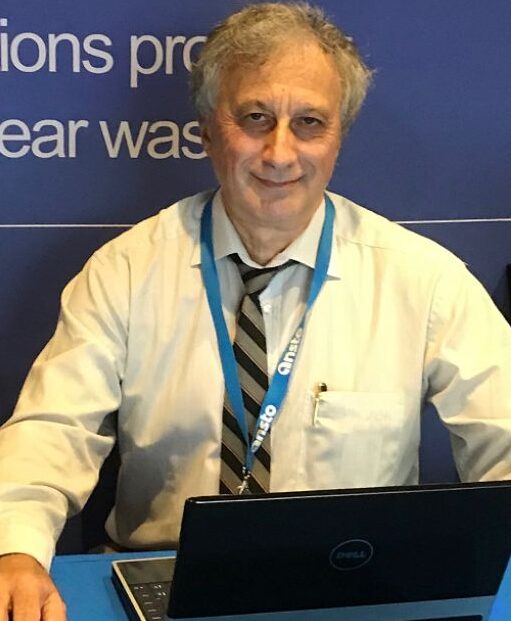
Vice President of Engineering
Synertech PM
Victor Samarov is the vice president of Engineering for Synertech PM. He has a masters degree in mechanical engineering from MPTU in Russia and a Ph.D. and full doctor’s degree from VILS Russia. He has spent over 45 years in PM HIP, and has over 250 publications and over 50 issues patents. With more than 45 years of experience in powder metallurgy and hot isostatic pressing (PM HIP), he has authored over 250 publications and is the holder of more than 50 patents.
For more information: Contact Victor at Victor@synertechpm.com or visit his LinkedIn.
Find heat treating products and services when you search on Heat Treat Buyers Guide.Com
Heat Treat Radio #126: HIP Finds New Life in Modern Manufacturing Read More »




